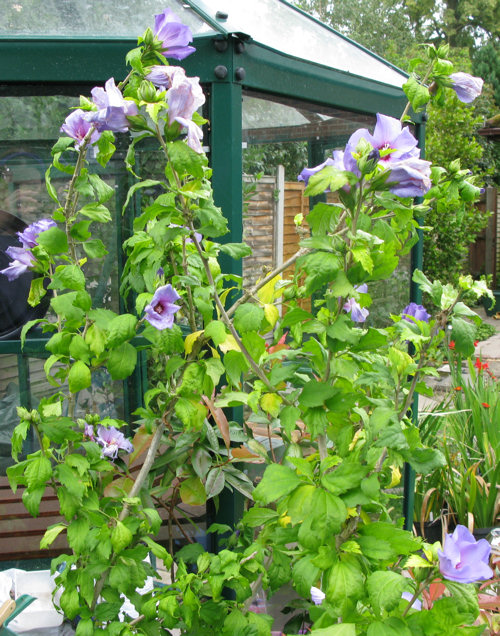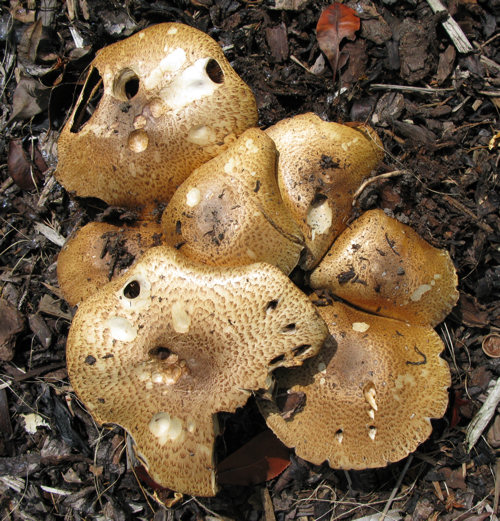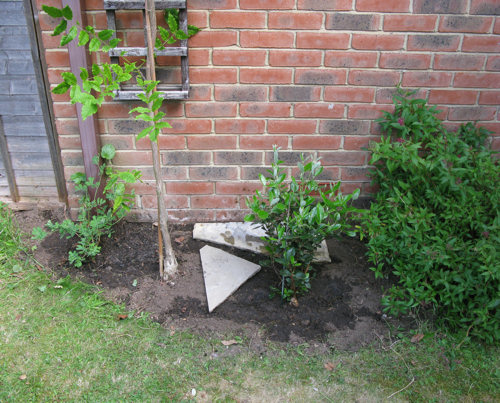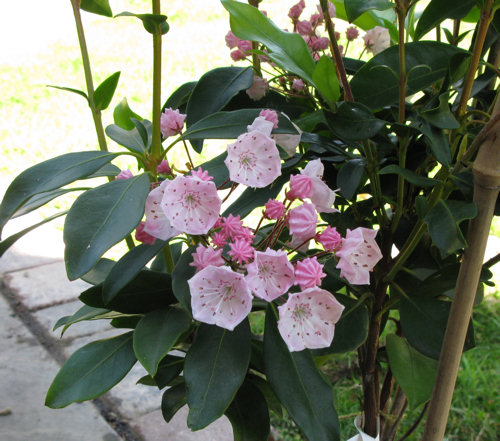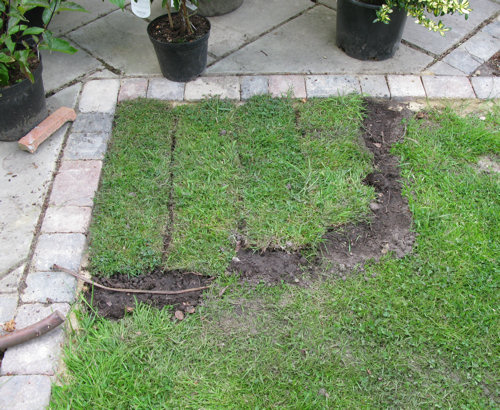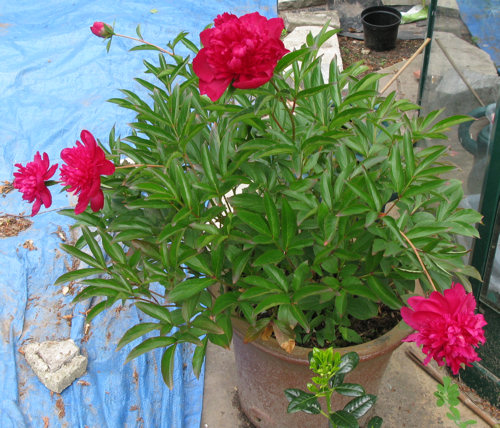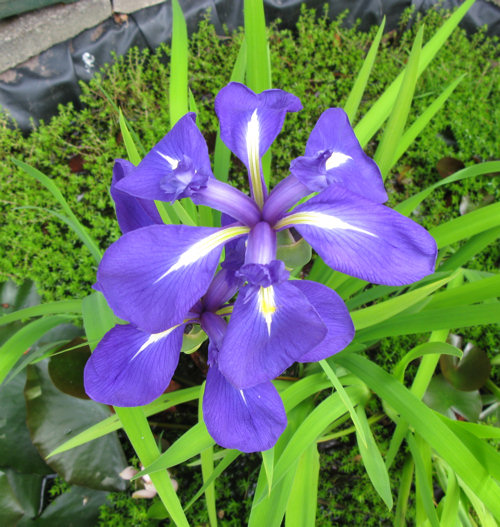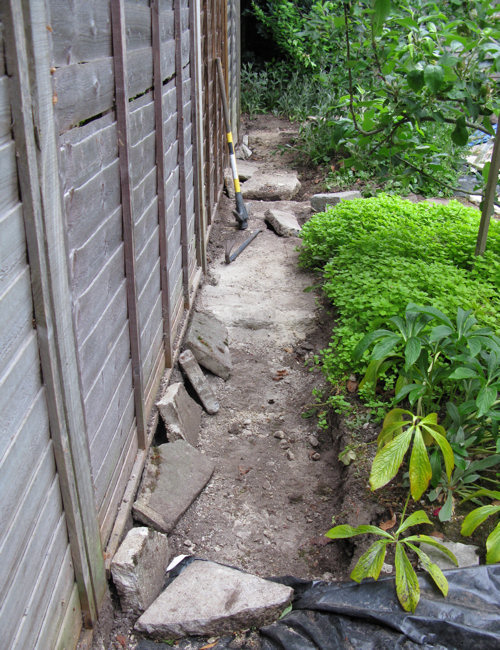The promised rain didn’t really come to much, so I had a good week of gardening. It’s now the time of year when I need to spend a lot of time on maintenance, so progress has not been as fast as it is in early spring, but I have started work on dismantling the path. I have removed all the paving apart from one little triangle that is stuck fast to the foundation and refuses to come loose. (You can’t see the triangle in the picture because it is in the part of the path that has turned a corner).
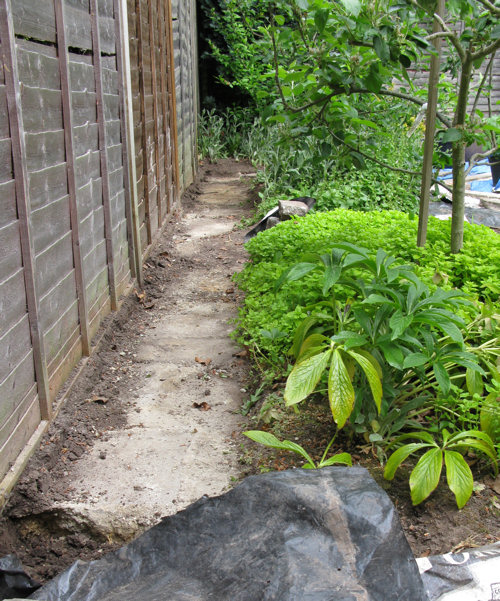
The path with foundations exposed
And then I made a start on taking up the foundation. The mortar mix used to make the foundation has varied a lot among my different sections of path, and unfortunately, these foundations are very hard. The work is also made more difficult by the fact that the path is right against my neighbour’s fence, which means I have to be careful how I swing the pickaxe and also take care next to the fence posts. I have managed to remove only about an eighth of the foundation so far (the path turns a corner at the end, so there is more to do than is apparent from the picture). I tried drilling holes in the foundation using my power drill with hammer action, but that was very unsuccessful – after I had drilled a row of holes, the slab eventually cracked along a different line further up.
Then I wondered whether some acid might help to weaken the concrete – after all, it contains calcium compounds, which should like reacting with acid. I thought about pouring some vinegar on it, but then I decided toilet cleaner would be even better. The toilet cleaner is easily the most corrosive thing in my house – the limescale remover for the taps only has an X on it, but the toilet cleaner has a picture of drops burning a hole in someone’s hand. And it contains hydrochloric acid, and is thick and clingy so should stay on the concrete until it rains. So I made three lines of toilet cleaner. There was not much sign of a reaction – a mass of very small bubbles, but no audible fizzing. Perhaps it would be better to chisel out a groove and pour the toilet cleaner into that, then see if a crack develops if I bash it again after a day or so.

Path foundations with blue lines of toilet cleaner
Still, I have done an eighth of the path, and I should be able to get through it eventually – it will just take time, like the Leylandii.
This is my latest arrangement of the tarpaulin on the pond. I am hoping that it will prove to be completely waterproof, but I need to wait for some rain to find out. The pond builder has been round to look at the pond, but has not told me his verdict yet. Blagdon has not replied to my email. It said it might take 14 days to respond unless my email referred to critically ill fish, but even if I get a reply today, this is still appallingly slow customer service. I can’t find any reviews of Blagdon Pond Paint on the Internet, which is unusual. It would be reassuring to hear that someone has managed to successfully waterproof a pond without the paint coming off and making a black sludge.

Tarpaulin over pond
I have been distracting myself from the Pond Disaster by thinking about my planting plan for the left hand side of the garden. There is just about room for the apple trees at the centre back of the garden as long as I allow the canopies of the trees to overlap with the lawn. I am planning to move the trees in November, although my dad says I can move them any time I like as long as I water them well. An important advantage of moving them in November is that they will be lighter, especially as I can prune them after I have eaten the apples. I think there will be room for the magnolia at the far left hand corner. I am quite excited at the thought of this, as I had thought that the magnolia would have to stay in its pot for ever. I also hope to put in the buddleia and escallonia next to the fence, and the pieris in the damp patch behind the pond (it will be damp because that’s where the overflow empties) and irises near the shallow pond. My three cornuses are supposed to go where the magnolia is going, but I can put them in the right hand side of the garden, next to the third pond. I don’t see why not.



